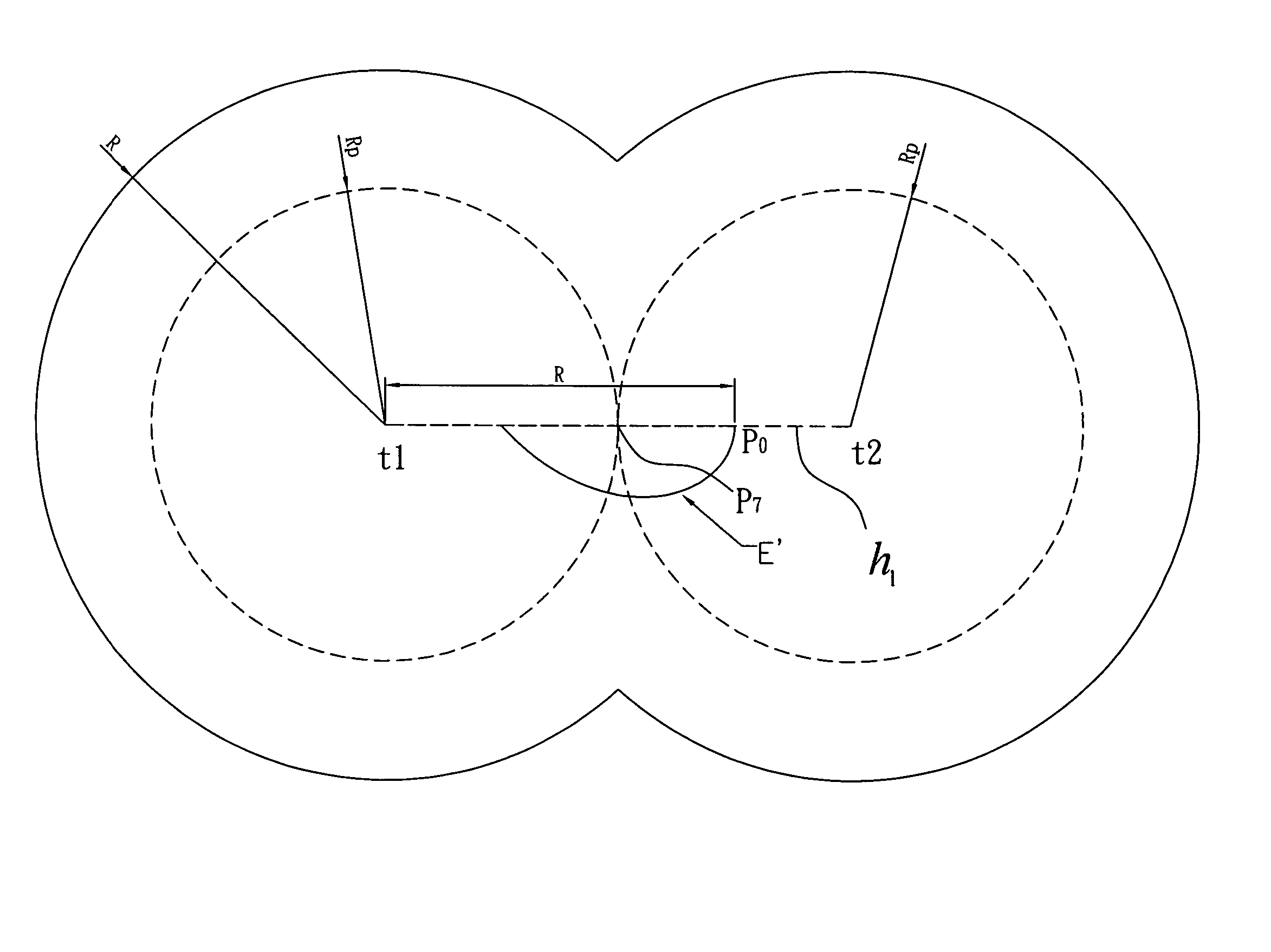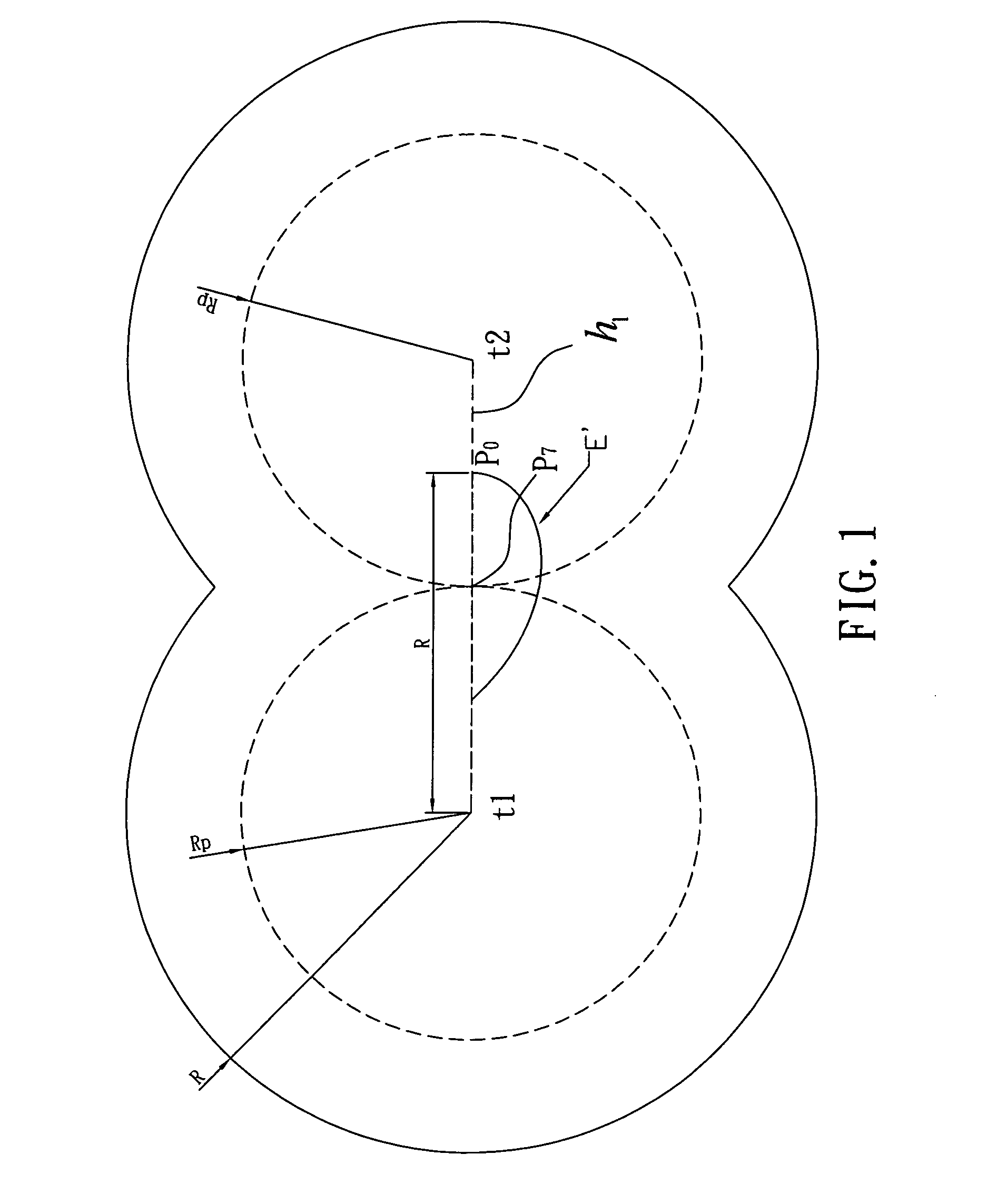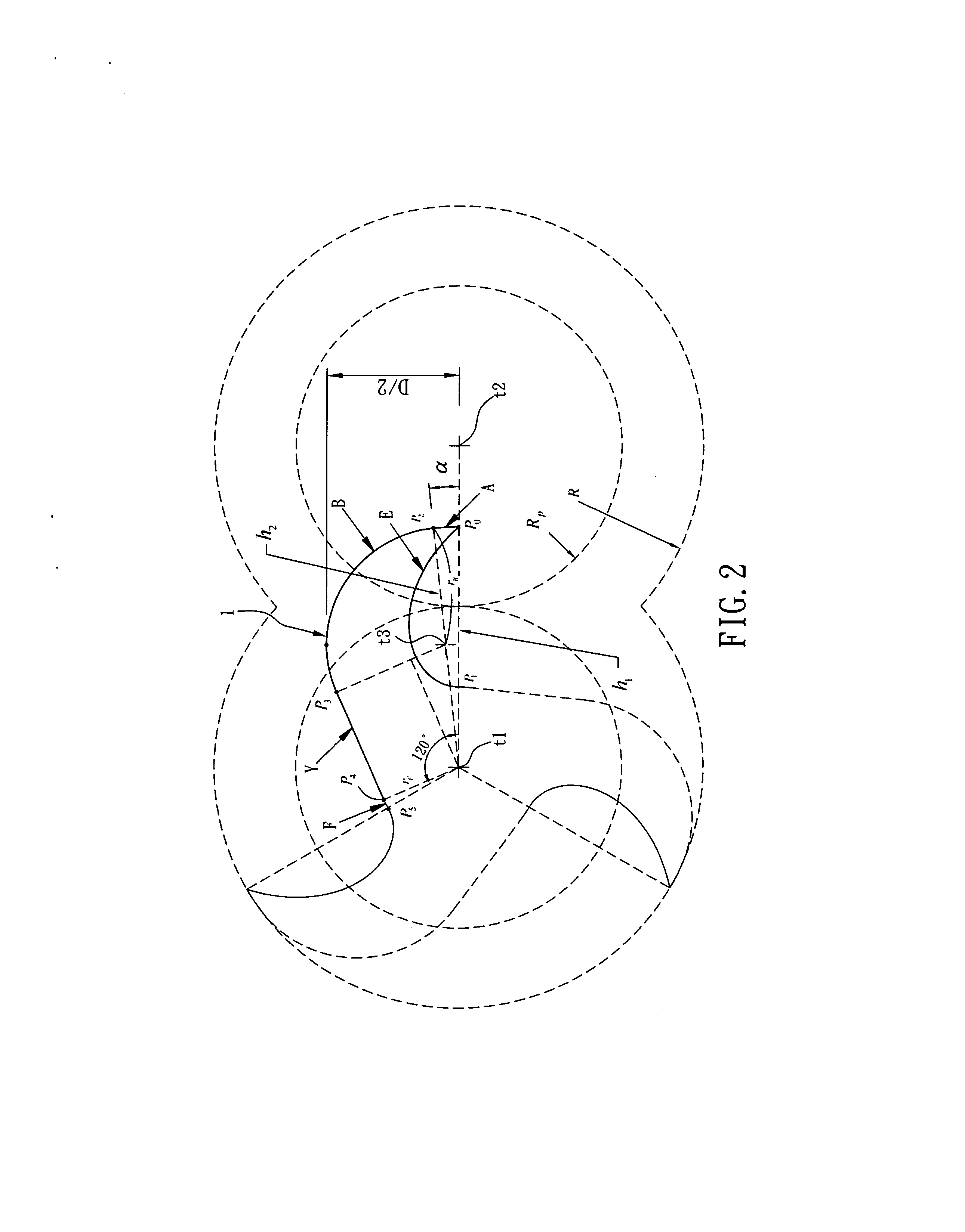Methods for designing lobe-type rotors
a rotor and lobe technology, applied in the direction of machines/engines, liquid fuel engines, instruments, etc., can solve the problems of abnormal situations such as noise and vibration, rotors not continuously and smoothly connected, rotors not fully meshing, etc., to achieve secure a smooth process, increase the discharge capacity, and increase the compression ratio
- Summary
- Abstract
- Description
- Claims
- Application Information
AI Technical Summary
Benefits of technology
Problems solved by technology
Method used
Image
Examples
Embodiment Construction
[0015] A three-lobe rotor design process in accordance with the present invention is adapted for designing curve portions of a defined rotor 1 by suitable parameters, and then get the curve portions of a conjugate rotor 2 with conjugate theory. Referring to FIGS. 1 to 3, designing process for forming the curve portions of the defined rotor 1 comprises the following steps:
[0016] 1. Designate a maximum radius R and a width D of the defined rotor 1, a pitch circle radius Rp of the defined and the conjugate rotor 1, 2, a first center t1 of the defined rotor 1 and a second center t2 of the conjugate rotor 2, wherein R=60 mm, D=65 mm, Rp=40 mm, the pitch circle radius Rp is smaller than radius R, and R and Rp are in appropriate ratio R=3Rp / 2.
[0017] 2. Referring to FIG. 1, define a reference horizontal line h1 by straight connecting the first center t1 and the second center t2, a base point P0 located on the reference horizontal line h1 and being offset from the first center t1 with a le...
PUM
| Property | Measurement | Unit |
|---|---|---|
| Radius | aaaaa | aaaaa |
Abstract
Description
Claims
Application Information
 Login to View More
Login to View More - R&D
- Intellectual Property
- Life Sciences
- Materials
- Tech Scout
- Unparalleled Data Quality
- Higher Quality Content
- 60% Fewer Hallucinations
Browse by: Latest US Patents, China's latest patents, Technical Efficacy Thesaurus, Application Domain, Technology Topic, Popular Technical Reports.
© 2025 PatSnap. All rights reserved.Legal|Privacy policy|Modern Slavery Act Transparency Statement|Sitemap|About US| Contact US: help@patsnap.com



